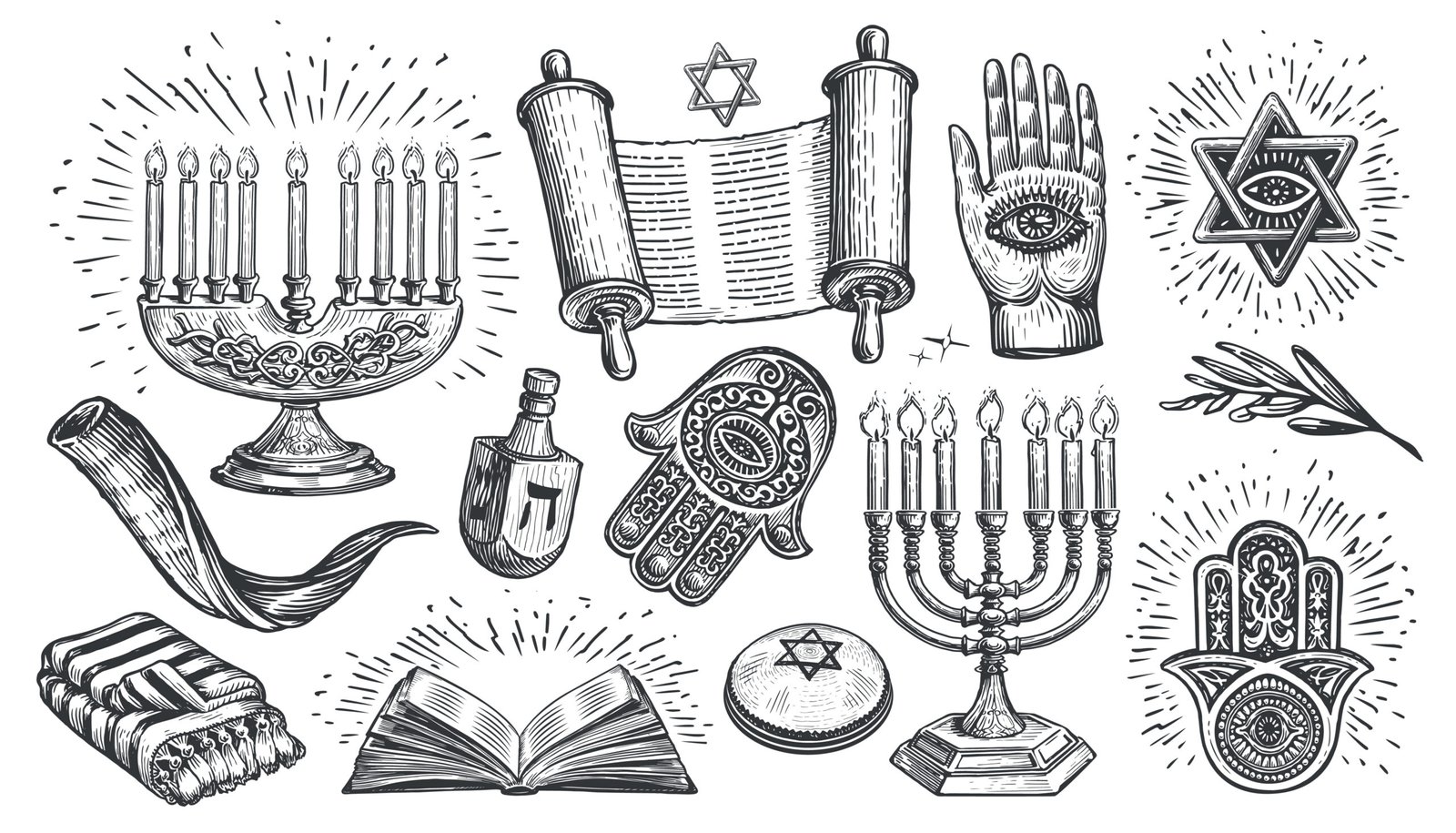Jewish web design presents a unique challenge: how to honor and reflect rich cultural and religious traditions while incorporating modern design principles and technologies. The goal is to create a website that resonates with the values and heritage of the Jewish community while also providing a contemporary, user-friendly experience. In this blog post, we’ll explore how Jewish web design can successfully balance tradition with modernity, ensuring both cultural relevance and cutting-edge functionality.

Embracing Traditional Elements
Cultural Symbols and Icons
Incorporating cultural symbols and icons is a key aspect of honoring Jewish traditions in web design. Traditional elements such as the Star of David, menorahs, and Hebrew calligraphy can be integrated into the design to create a sense of identity and connection. These symbols should be used thoughtfully and tastefully to enhance the site’s aesthetic while maintaining its cultural significance.
Heritage Colors and Patterns
Jewish web design often includes colors and patterns that reflect cultural heritage. Colors like blue and white, associated with Jewish symbols and holidays, are commonly used to evoke a sense of tradition. Patterns inspired by traditional Jewish art, such as geometric designs or motifs from historical textiles, can add a distinctive touch to the design while paying homage to cultural history.
Religious Imagery
Incorporating religious imagery, such as depictions of Torah scrolls or scenes from Jewish history, helps convey the spiritual and historical aspects of the Jewish faith. When using religious imagery, it is important to be respectful and accurate, ensuring that representations are culturally appropriate and meaningful.
Integrating Modern Design Principles
Clean and Minimalist Design
Modern web design emphasizes clean, minimalist aesthetics that focus on usability and simplicity. For Jewish websites, this means using a streamlined layout with clear navigation, ample white space, and a focus on essential content. A minimalist approach can help make the website more user-friendly and ensure that traditional elements do not overwhelm the user experience.
Responsive Design
With the increasing use of mobile devices, responsive design is essential for modern web experiences. Jewish websites should be designed to adapt seamlessly to various screen sizes and devices, ensuring that users have a consistent and enjoyable experience whether they are accessing the site from a smartphone, tablet, or desktop computer.
Interactive Features
Modern web design often incorporates interactive features to engage users and enhance the experience. Jewish websites can benefit from interactive elements such as virtual tours, interactive calendars, and multimedia content. These features can make the website more engaging and provide users with dynamic ways to explore Jewish traditions and community activities.
Harmonizing Tradition and Modernity
Design Consistency
Maintaining design consistency is crucial for balancing tradition and modernity. Jewish websites should integrate traditional elements in a way that complements modern design principles, ensuring that the overall aesthetic is cohesive and harmonious. Consistent use of colors, fonts, and imagery helps create a unified look that respects cultural heritage while embracing contemporary design.
Cultural Sensitivity
Balancing tradition with modernity requires cultural sensitivity and awareness. It is important to ensure that traditional elements are used appropriately and respectfully, avoiding stereotypes or misrepresentations. Engaging with community members and cultural experts during the design process can help ensure that the website accurately reflects Jewish values and traditions.
User Experience Focus
A key aspect of balancing tradition with modernity is prioritizing user experience. While traditional elements are important, they should not compromise the website’s functionality or usability. Ensuring that the site is easy to navigate, fast-loading, and accessible to all users should be a primary focus. Modern design techniques should enhance the user experience without overshadowing traditional content.
Case Studies of Successful Integration
Synagogue Websites
Many synagogue websites successfully balance tradition with modern design. For example, some synagogues use traditional symbols and Hebrew text alongside clean, modern layouts and interactive features. These websites often include sections for live-streamed services, educational resources, and community events, providing a comprehensive digital experience that honors tradition while embracing contemporary technology.
Jewish Educational Platforms
Jewish educational platforms often integrate traditional content with modern e-learning tools. Websites offering online courses, virtual classrooms, and interactive learning modules combine traditional Jewish teachings with modern educational technologies. This integration allows for an engaging learning experience that respects the depth of Jewish knowledge while leveraging current digital tools.
Community Outreach Websites
Community outreach websites for Jewish organizations often strike a balance between tradition and modernity by featuring culturally relevant content in a user-friendly format. These sites may include donation platforms, event calendars, and volunteer sign-ups, all presented with a design that reflects Jewish values while utilizing contemporary web design practices.
Conclusion
Balancing tradition with modernity in Jewish web design involves carefully integrating cultural elements with contemporary design principles to create a compelling and functional online presence. By incorporating cultural symbols, heritage colors, and religious imagery alongside modern design practices like clean layouts, responsive design, and interactive features, Jewish websites can honor their rich traditions while providing a user-friendly and engaging experience. This harmonious approach ensures that the website not only reflects the values and heritage of the Jewish community but also meets the needs of today’s digital users.




